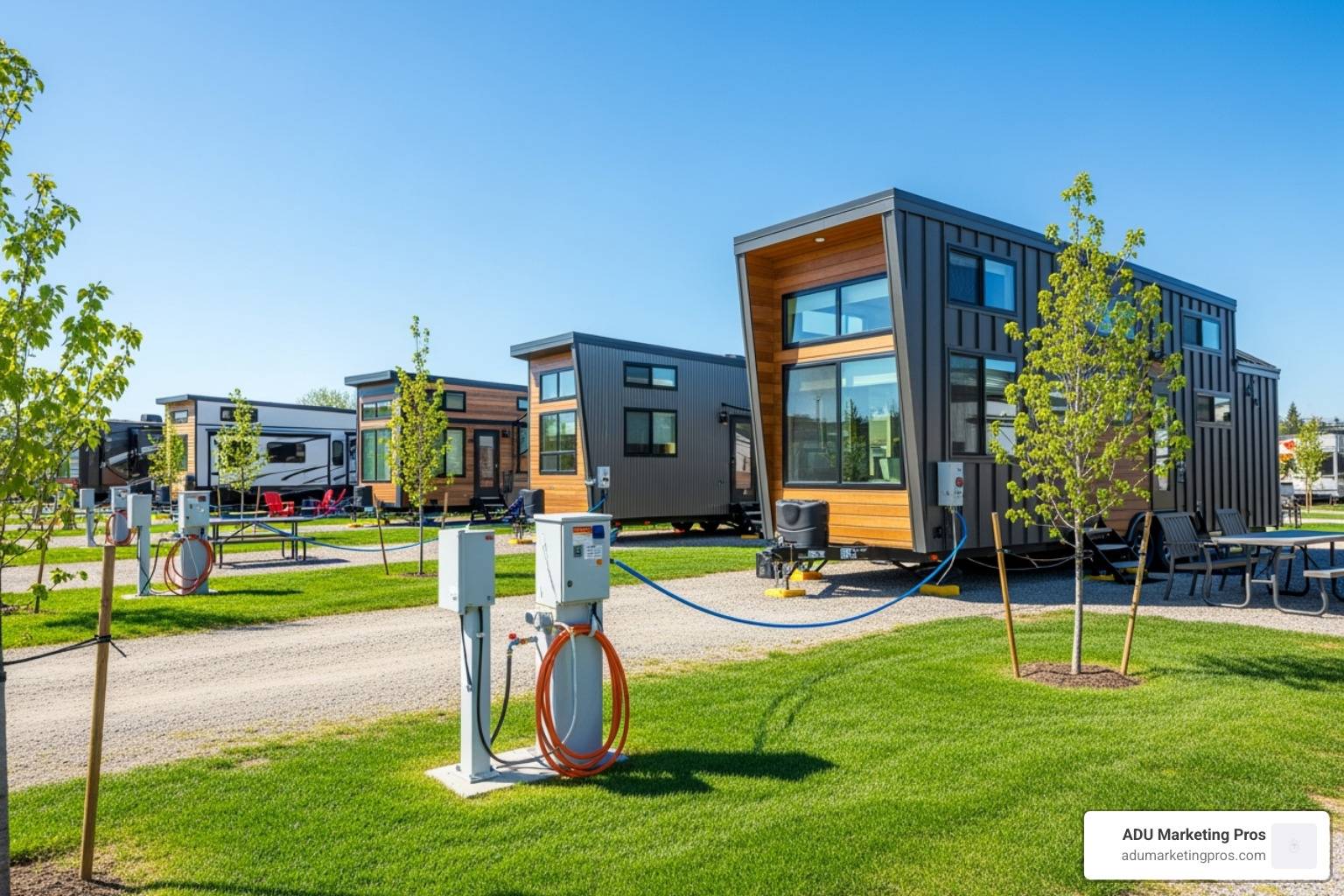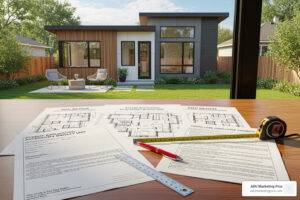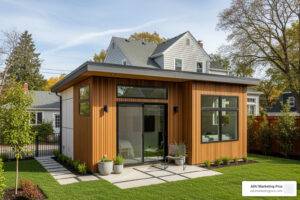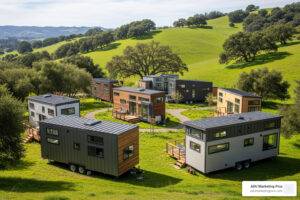Why RV Park Placement is the Solution to Your Tiny Home Placement Puzzle
The tiny house movement has captured the imagination of millions seeking a simpler, more affordable, and sustainable lifestyle. You’ve designed your dream home, meticulously planned every square inch, and are ready to embrace minimalist living. But then you hit the wall: the placement puzzle. Where can you legally and practically park your tiny house on wheels (THOW)? This single question has stalled countless tiny living dreams, trapping them in a frustrating limbo of complex zoning laws and disapproving municipalities. This is where RV park tiny homes emerge as the elegant and immediate solution.
RV parks offer a ready-made answer, providing designated, serviced lots within a legal framework that sidesteps the most common obstacles. They transform the daunting challenge of finding land into a straightforward process of choosing a community. Instead of battling city hall, you can focus on what matters: living your life.
Key Benefits of RV Park Tiny Homes:
- Immediate Legal Placement: RV parks are already zoned for recreational vehicles, a category that certified tiny homes on wheels fall under. This eliminates the need to navigate restrictive residential zoning codes that often prohibit THOWs.
- Full Utility Hookups: Arrive and plug in. Your lot comes equipped with water, sewer, electrical, and often cable and internet connections, saving you the immense cost and hassle of installing utilities on private land.
- Built-in Community and Amenities: Beyond just a place to park, you gain access to a neighborhood. Enjoy shared amenities like swimming pools, laundry facilities, clubhouses, and fitness centers while connecting with like-minded neighbors.
- Significant Affordability: With no property taxes and monthly lot rents that are typically far lower than apartment rent or a mortgage, the financial barrier to homeownership is drastically reduced.
- Simplified, Stress-Free Setup: The entire process is streamlined. You avoid the bureaucracy of permits, inspections, and land-use applications that can plague those trying to place a tiny home on a private lot.
The explosion in tiny living’s popularity has outpaced the evolution of local laws. Most cities classify THOWs as recreational vehicles, which severely limits long-term or permanent placement on private property. RV parks are the game-changers because they are designed for this exact purpose. From specialized tiny house villages to welcoming communities like California’s Delta Bay, RV parks provide the infrastructure, legality, and stability that tiny home dwellers need to thrive.
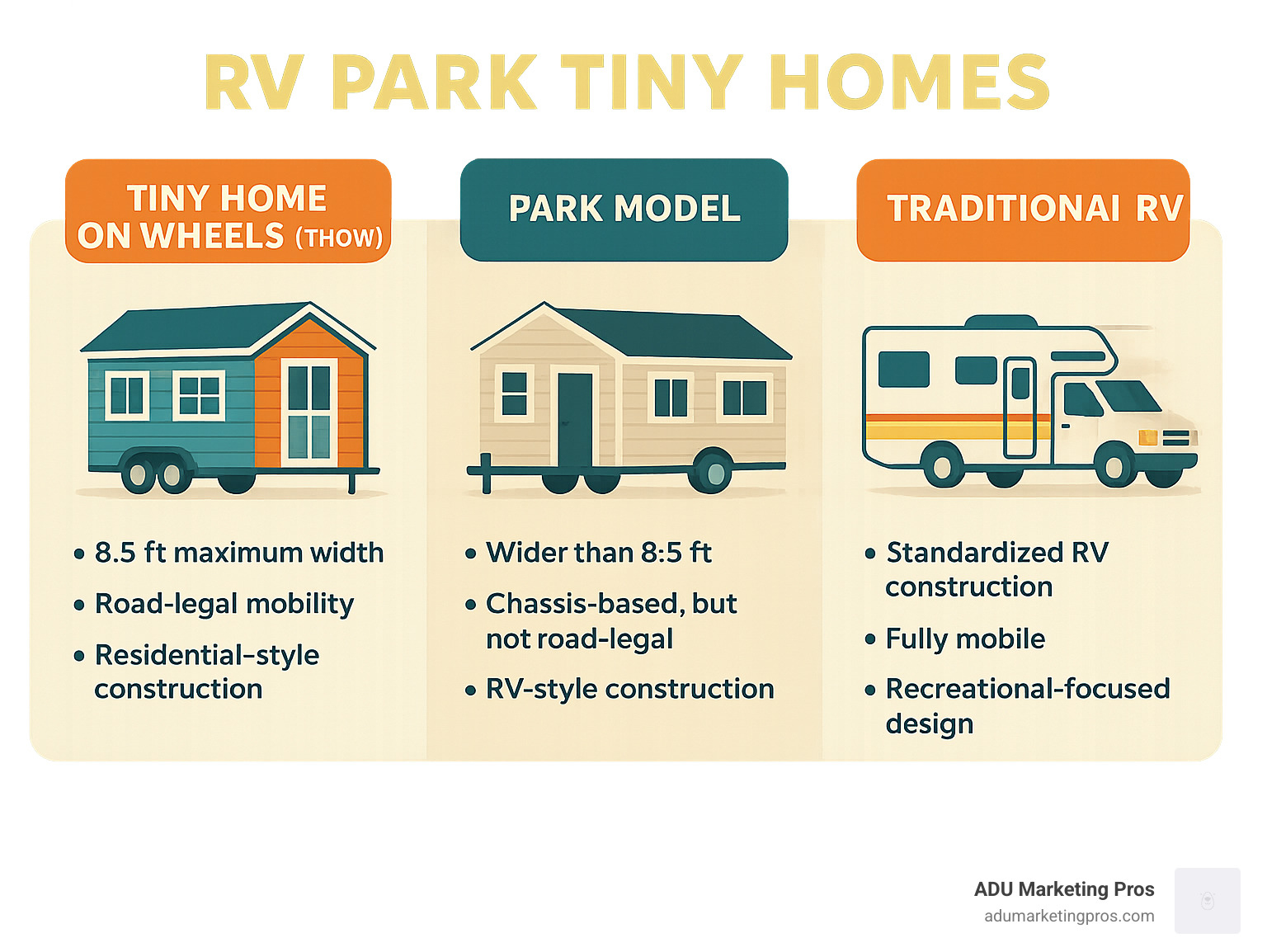
The Legal Hurdle: Why RV Park Placement is a Game-Changer
For aspiring tiny home owners, the dream often collides with a harsh reality: finding a legal place to park a tiny home on wheels (THOW) is the single greatest challenge. The vast majority of THOWs exist in a legal gray area because zoning laws and land use regulations were drafted long before the movement began. Municipalities, unsure how to classify these unique dwellings, typically default to labeling them as recreational vehicles. This classification comes with heavy restrictions, severely limiting where they can be parked long-term. For instance, many counties enforce a “60-day rule” or similar ordinance, which prohibits living in an RV or THOW on private land for more than two months a year, making full-time residency impossible.
This is precisely why RV park tiny homes are such a revolutionary solution. RV parks are commercially zoned properties specifically designed for recreational vehicles, providing an established and legal framework that private land lacks. Instead of waging a costly and uncertain battle with municipal codes, you can move into a community where your home is not just tolerated, but welcomed. The key to unlocking this solution, however, lies in certification.
Understanding Certifications: Your Key to Entry
Think of certification as your tiny home’s passport; without it, the gates to most RV park tiny homes communities will remain closed. The RVIA certification is the undisputed gold standard in the United States. This seal, issued by the Recreational Vehicle Industry Association, is a third-party verification that your home complies with the NFPA 1192 standard. This is not just a piece of paper; it’s a comprehensive safety code governing over 500 points, including electrical systems, plumbing, structural integrity, and critical fire and life safety measures like proper egress windows and smoke detector placement. For homes built in Canada, the CSA Z240 standard serves as the equivalent benchmark. You can learn more from the official sources: the Recreational Vehicle Industry Association at https://www.rvia.org/, the NFPA 1192 standard overview at https://www.nfpa.org/codes-and-standards/all-codes-and-standards/list-of-codes-and-standards/detail?code=1192, and CSA Group’s recreational vehicle certification page at https://www.csagroup.org/testing-certification/product-areas/recreational-vehicles/.
Why do parks insist on these certifications? It boils down to liability and insurance requirements. A certified home is a known quantity, a professionally built dwelling that has been inspected for safety. An uncertified, DIY home, no matter how well-built, represents a significant unknown risk to the park’s insurance carrier. The builder certification assures the park management that the home is not a potential fire hazard or structural liability, protecting the entire community.
Navigating Local Zoning and Park Rules
Even with the right certification, your due diligence isn’t over. You must investigate the specific rules of each park and the local ordinances that govern it. A critical factor is permanent residence restrictions. While many parks cater to full-timers, some operate under municipal ordinances that limit continuous occupancy, sometimes to 10 or 11 months a year, forcing residents to vacate for a short period. This is a crucial question to ask upfront.
Beyond residency, park rulebooks can be extensive. Look for occupancy limits (e.g., maximum two people per home), aesthetic requirements like mandatory skirting to hide the undercarriage, and rules on exterior storage sheds or decks. Policies on pets (breed, size, and number), noise levels, and guest stays also vary widely. The best strategy is to vet park rules meticulously before signing a lease. Request a copy of the rulebook, visit the community, and talk to current residents to get an unfiltered view of daily life and management’s enforcement style. Finding a park whose regulations align with your lifestyle is essential for long-term happiness. If you’re weighing all options, understanding the regulatory differences between an ADU vs Tiny House is also vital, as they fall under entirely different sets of laws.
Tiny Home vs. Traditional RV: What’s the Real Difference?
At first glance in an RV park, a tiny home on wheels (THOW) and a traditional RV might seem interchangeable. Both occupy a similar footprint and connect to the same utilities. However, they are fundamentally different products designed for vastly different purposes. A traditional RV is engineered for temporary, recreational travel and seasonal adventures. A THOW is constructed like a miniature house, using residential methods and materials, and is intended for durable, full-time living.
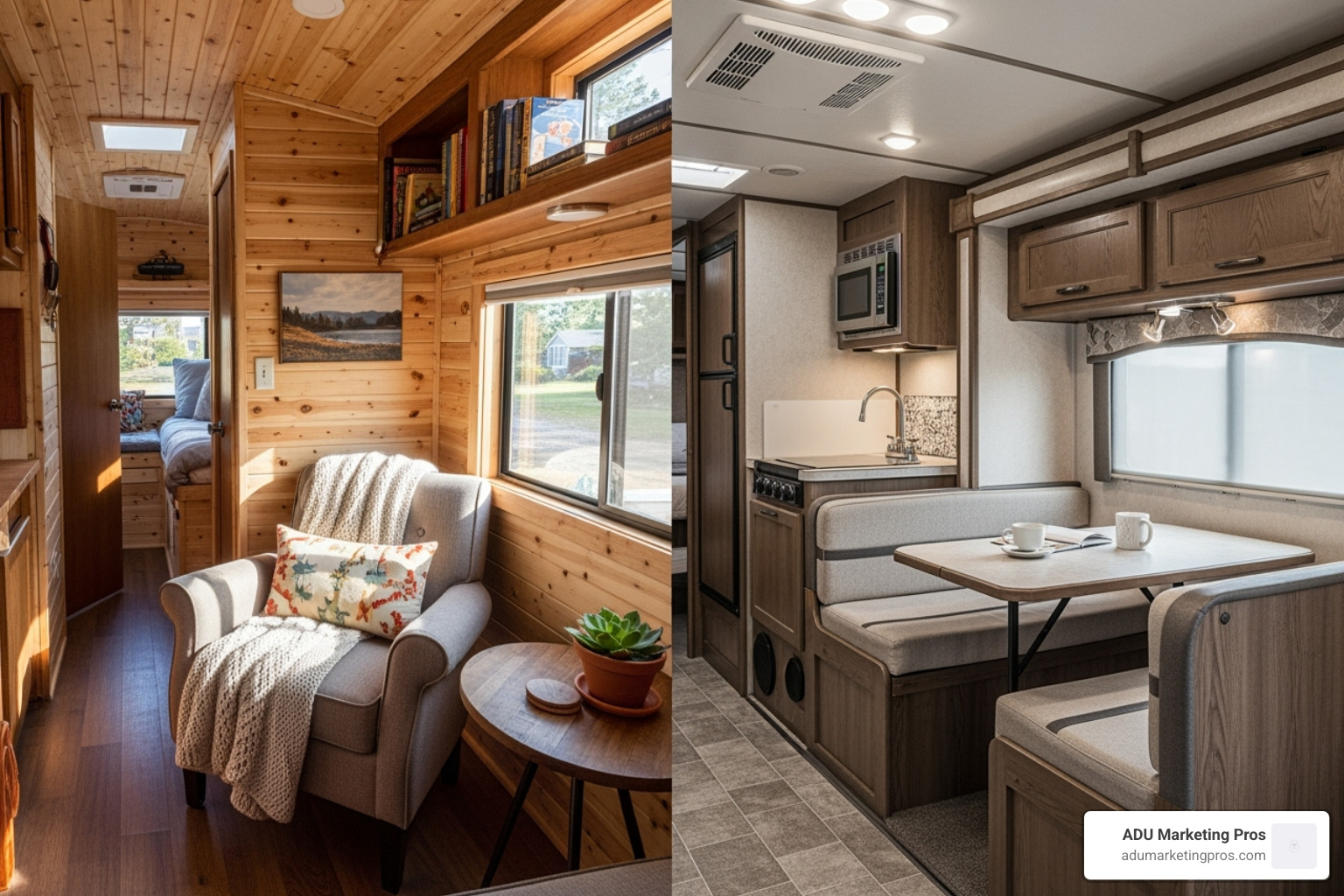
The most significant distinctions are construction quality and durability. Tiny homes are built with residential-grade materials—2×4 wood framing, standard house wrap, high-quality insulation (like spray foam), and double-pane windows. This robust construction is designed for four-season living, providing superior energy efficiency and comfort in both heat and cold. This leads to a much longer potential lifespan of 30-50+ years, comparable to a traditional home. In contrast, RVs are built for lightness, using aluminum framing, thin fiberglass walls, and single-pane windows, resulting in a shorter lifespan of 10-20 years and less suitability for extreme climates.
This house-like construction makes tiny homes significantly heavier, often weighing 10,000-15,000+ pounds, which necessitates a heavy-duty truck for towing. Inside, the focus is on aesthetics and a home-like feel. You’ll find features uncommon in RVs, such as butcher block countertops, tile backsplashes, standard plumbing fixtures, and customizable finishes that reflect the owner’s taste, reinforcing its role as a primary residence.
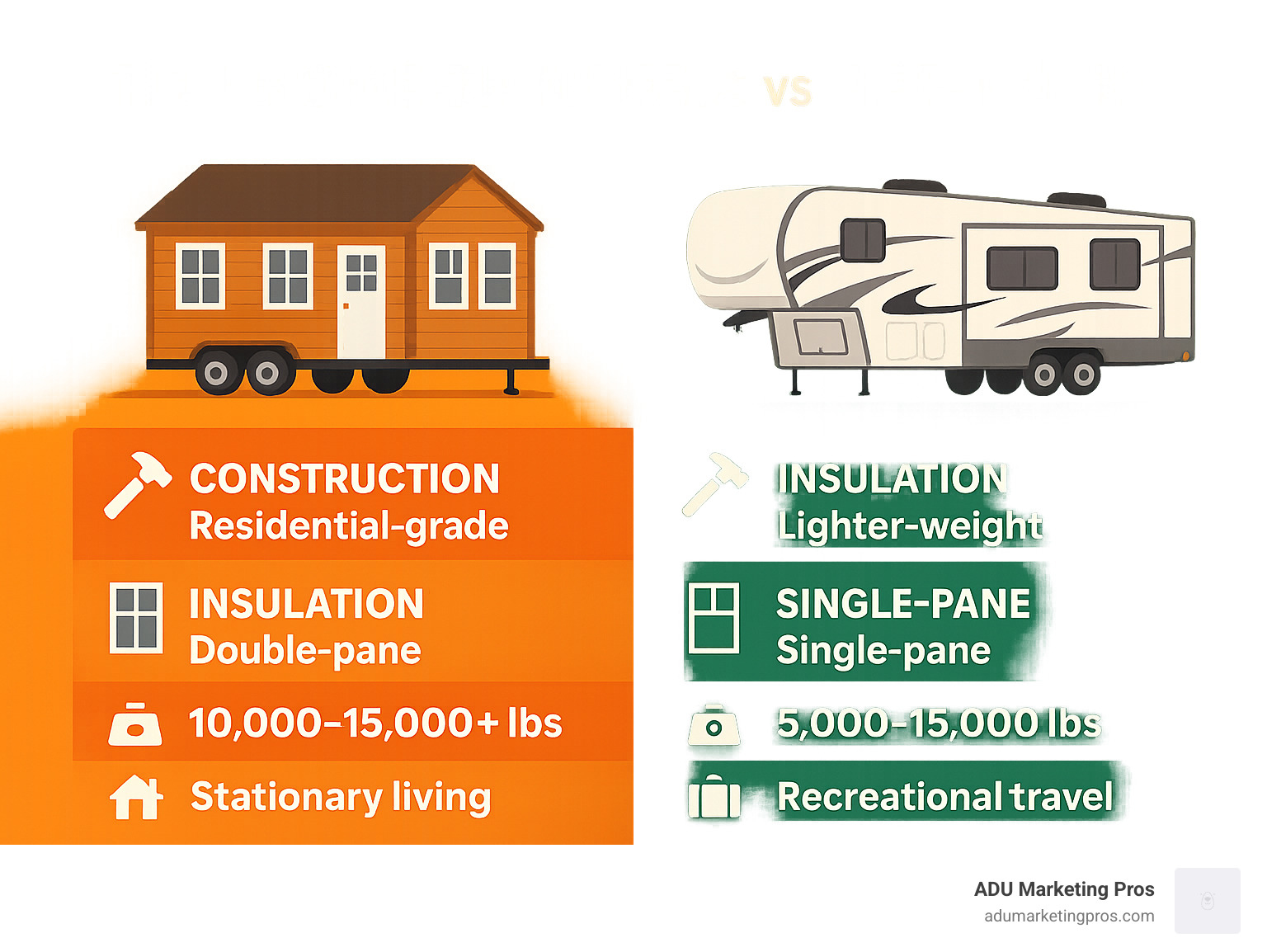
| Feature | Tiny Home on Wheels (THOW) | Traditional RV (e.g., Fifth-Wheel) |
|---|---|---|
| Construction Method | Built like a miniature house with residential-grade materials (wood framing, insulation, standard windows/doors). | Lighter construction, often aluminum or fiberglass siding, designed for mobility. |
| Insulation Quality | Superior insulation (higher R-values), designed for four-season living and energy efficiency. | Lighter insulation, primarily designed for recreational, seasonal use. |
| Window Type | Double-pane, energy-efficient windows, similar to traditional homes. | Single-pane, lightweight windows, less insulated. |
| Average Weight | Heavier, typically 10,000-15,000+ lbs, requiring a robust tow vehicle. | Lighter, designed for easier towing, typically 5,000-15,000 lbs. |
| Estimated Lifespan | 30-50+ years with proper maintenance, similar to a traditional stick-built home. | 10-20 years, depending on use and maintenance. |
| Primary Use | Designed for full-time, stationary living with occasional relocation. | Designed for recreational travel and temporary stays. |
| Resale Value | Tends to hold value better due to durable construction and residential appeal. | Depreciates quickly, similar to a vehicle. |
For RV park tiny homes, these superior qualities are a significant advantage. Park managers increasingly recognize that tiny home residents are often stable, long-term community members who take pride in their homes. If your goal is to downsize your footprint without sacrificing the quality, comfort, and longevity of a real home, a THOW is the unequivocal choice.
The Perks and Practicalities of RV Park Tiny Homes
Choosing to live in an RV park tiny home is more than a housing decision; it’s an intentional shift towards a lifestyle centered on affordability, community, and simplicity. This path directly solves the number one problem for tiny home owners—finding a legal, serviced place to park—while unlocking a host of financial and social benefits. You get to bypass the frustrating maze of zoning hearings and the six-figure expense of installing utilities on raw land. Furthermore, the shared experience of choosing an alternative lifestyle naturally fosters a unique sense of camaraderie with your neighbors. This approach also deeply resonates with the philosophy of eco-friendly small homes, as a smaller, well-insulated space inherently requires less energy to heat and cool, reducing your environmental impact.
The All-Inclusive Lifestyle: Amenities to Expect
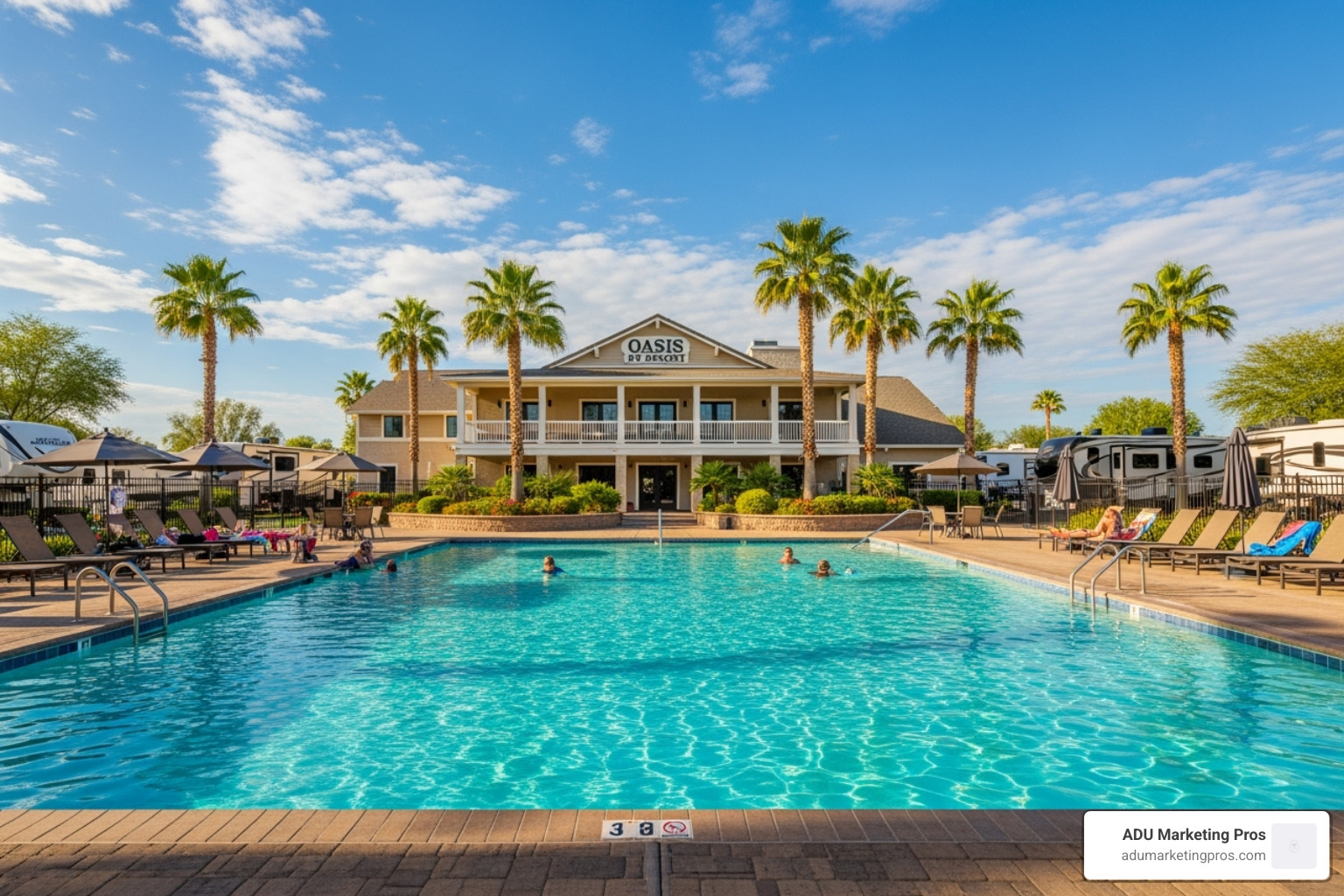
Modern RV parks and tiny home communities are increasingly offering amenities that rival or even exceed those of conventional apartment complexes. At a minimum, you can expect full hookups for electricity (30 or 50 amp), water, and sewer directly at your site. Beyond the basics, many parks provide reliable high-speed internet (either as part of the rent or a separate fee), gated security for peace of mind, and clean, well-maintained on-site laundry facilities. For pet owners, amenities like fenced dog parks and walking trails are a huge draw.
The heart of park life often lies in the community spaces. Clubhouses serve as social hubs for potlucks and events, swimming pools offer a refreshing escape, and fitness centers save you the cost of a gym membership. Shared BBQ areas, fire pits, and playgrounds encourage spontaneous social interaction and help build lasting friendships. Some forward-thinking communities even offer unique perks like fishing docks, sports courts, or community gardens where residents can grow their own vegetables.
A Look at the Costs for RV Park Tiny Homes
The financial equation for RV park tiny homes is one of its most attractive features. The primary upfront cost is the tiny home itself, which can range from $30,000 for a DIY model to over $100,000 for a high-end custom build. While a significant investment, this is a fraction of the median home price in most of the country, especially in high-cost areas like our home base of San Jose.
Your main recurring expense is the monthly lot rent. This can vary widely from $400 in rural areas to over $750 or more in desirable locations with extensive amenities. However, this single payment often bundles water, sewer, and trash services. The most significant financial advantage is the complete absence of property taxes, as you are leasing, not owning, the land. This can save you thousands of dollars annually compared to traditional homeownership. When you add it all up, the total cost of living is substantially lower than renting an apartment or servicing a mortgage, freeing up your income for travel, savings, or other passions.
Choosing the Right Community for Your Tiny Home
Selecting the right community for your RV park tiny home is a decision that carries as much weight as choosing a neighborhood for a traditional house. You are not merely renting a plot of land; you are investing in a lifestyle, a social environment, and a relationship with a management team. The right fit can lead to years of happiness, while the wrong one can be a constant source of frustration.
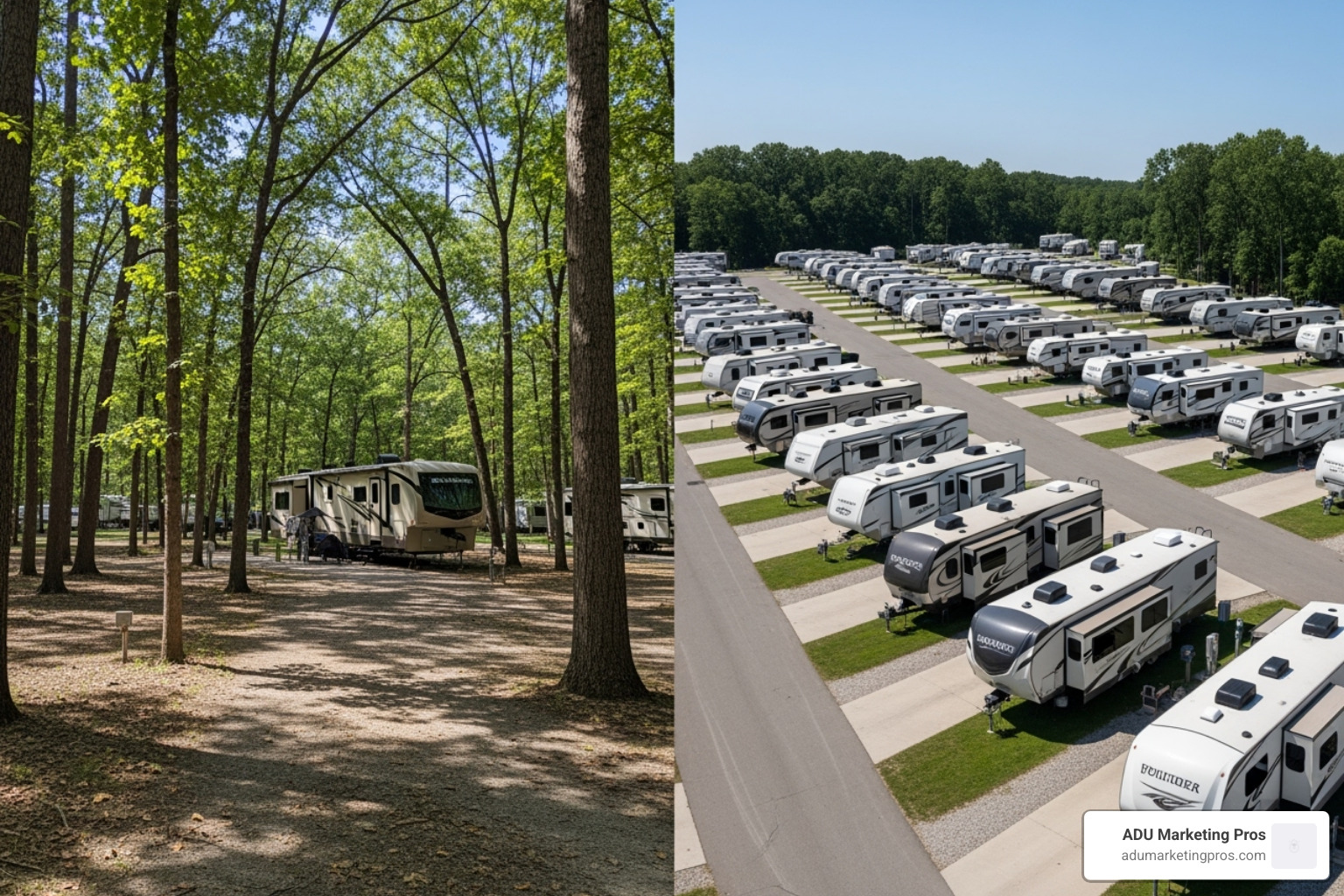
RV park communities are not one-size-fits-all. Some are designed with spacious, wooded lots that offer a sense of privacy and a connection to nature. Others feature more compact, uniform layouts that are designed to foster a tight-knit, social atmosphere. Consider what you value most in site size and privacy. The overall park atmosphere is also a critical factor. Are you looking for a vibrant social hub with frequent events, a quiet and peaceful retreat, or a specialized community like an active 55+ community? If you plan to live there full-time, it’s essential to confirm that the park has dedicated long-term sections with annual leases, separate from the transient areas for short-term vacationers. Finally, practical considerations like proximity to your job, shopping, and healthcare are paramount. Don’t forget to scrutinize the pet policies, as strict rules on breed, size, or number of pets can be an instant deal-breaker. For inspiration, you can see how different communities present themselves, from a community in Texas like The Pines RV Community to a resort-style park in California like Delta Bay.
Vetting the Park and Management
A fantastic community can be soured by poor management. Before you commit, thorough due diligence is non-negotiable. Here’s a checklist for your investigation:
- Read Online Reviews: Go beyond the star rating. Look for recent reviews on multiple platforms and search for patterns in comments regarding management responsiveness, maintenance issues, and rule enforcement consistency.
- Visit in Person (More Than Once): Schedule an official tour, but also drive through on a weekend or evening. Does the park feel safe and well-maintained? Are common areas clean and actively used? Do the residents seem happy and friendly?
- Speak to Current Residents: This is your most valuable source of intelligence. Politely approach a few residents and ask about their experience. Inquire about management, rent increases, how disputes are handled, and the overall community vibe.
- Scrutinize the Lease Agreement: Request a copy of the lease and the full park rulebook. Read every line. Pay close attention to clauses regarding rent increases (how much and how often), rules for site modifications (decks, sheds, landscaping), guest policies, and the consequences for rule violations.
A responsive management team and clear, consistently enforced rules are the hallmarks of a well-run community. This research is a vital step, especially when searching for Places in Southern California That Allow Tiny Houses, where high demand makes it even more important to choose wisely.
Potential Challenges and Drawbacks
While the RV park tiny home lifestyle offers a compelling blend of freedom, affordability, and community, it’s crucial to approach it with a clear understanding of the potential drawbacks. This lifestyle involves a series of trade-offs, and being aware of the challenges from the outset is the best way to ensure your experience is a positive one.
The most significant and fundamental challenge is the lack of land ownership. You own your beautiful home, but you are a tenant on the land it occupies. This means you are not building any real estate equity in the land itself. This arrangement also exposes you to the risk of the park being sold for redevelopment. While rare, if a developer buys the park, you could be forced to move your home, sometimes with limited notice.
This tenant relationship also means you are subject to rent increases. While lot rent is affordable, it is not fixed. Park owners can and do raise the rent, typically on an annual basis. You need to budget for these potential increases and understand the local regulations, if any, that govern how much and how often rent can be raised. A sudden, steep increase could significantly impact your cost of living.
Rule changes are another reality of park life. The rules you agree to when you move in may not be the rules a year later. A new management company or a shift in park policy could lead to frustrating changes, such as new restrictions on pets, limits on the age of vehicles allowed in the park, or new aesthetic standards for your lot that require you to spend money.
The close quarters inherent in most park layouts can be a double-edged sword. While it fosters community, it can also lead to a lack of privacy. You will likely hear your neighbors and they will hear you. A neighbor with a different schedule, a barking dog, or a penchant for loud music can become a source of friction. Success in this environment requires a high degree of tolerance and mutual respect.
Finally, be aware of potential resale challenges. When it’s time to sell your tiny home, you are not just selling a house; you are selling it in its current location. Most parks require that they approve the new owner, which can limit your pool of potential buyers. Some parks may also have rules about the age of the home that can be sold on-site, or they may even require a commission on the sale. These factors can complicate and prolong the selling process.
Frequently Asked Questions about RV Park Tiny Homes
Navigating the world of RV park tiny homes can bring up many questions. Here are detailed answers to some of the most common inquiries we receive.
Does my tiny home need a special certification for an RV park?
Yes, absolutely. This is arguably the most critical requirement. The vast majority of RV parks mandate certification for insurance and liability purposes. The most widely accepted certification in the U.S. is the RVIA seal from the Recreational Vehicle Industry Association. This seal verifies that your home adheres to the NFPA 1192 standards, which cover crucial safety systems like electrical, plumbing, heating, and fire safety. For homes from Canada, the equivalent is the CSA Z240 RV standard. Attempting to place a non-certified or DIY home in a reputable park is nearly impossible, as it presents an unacceptable liability risk to the park’s owners and their insurance company.
Can I live in my tiny home year-round in an RV park?
This depends entirely on the specific park and the local municipal ordinances that govern it. Many modern RV park tiny homes communities are specifically designed for and welcome full-time, year-round residents. These parks offer annual leases and a stable community environment. However, some parks, particularly in tourist destinations, may be zoned for “transient” or temporary occupancy. Furthermore, some cities or counties have local laws that impose “occupancy limits,” restricting a continuous stay in any RV-type dwelling to a set period, such as 10 or 11 months. It is essential to verify both the park’s official policy and the local city/county laws before making a commitment.
Are park model homes the same as tiny homes on wheels?
No, they are distinct categories of factory-built housing, though they are often found in the same communities. The key differences are size and mobility.
- Tiny homes on wheels (THOWs) are legally classified as RVs. They are typically 8.5 feet wide or less to be road-legal without special permits. They are built on a chassis with wheels and are designed for mobility, even if they remain stationary for long periods.
- Park model homes (also known as Park Model RVs) are wider, often 12 feet or more. While built on a chassis, they are not designed for easy travel and require special permits and professional movers. They are transported to a site and set up more permanently, often with extensive decking and skirting, offering more interior space at the expense of mobility.
Your choice depends on your priorities: a THOW offers flexibility and the freedom to move, while a park model provides more spacious, house-like living for those who plan to stay put.
How do I finance a tiny home for an RV park?
Financing a THOW is different from a traditional mortgage. Since you don’t own the land, you cannot get a conventional mortgage. The most common financing options are chattel loans (loans for movable property, like vehicles or mobile homes) or unsecured personal loans. Some tiny home builders offer in-house financing. Interest rates are typically higher than mortgages, but loan terms are much shorter. Having a good credit score and a significant down payment will be crucial to securing favorable terms.
What is ‘skirting’ and why do parks require it?
Skirting is the material used to enclose the space between the bottom of the tiny home and the ground. Parks often require it for both aesthetic and practical reasons. Aesthetically, it creates a more permanent, finished look, hiding the wheels, chassis, and utility connections. Practically, it can help with insulation by preventing cold air from blowing underneath the home, deter pests from making a home under your house, and provide a small, enclosed storage area.
Conclusion
For the thousands of people captivated by the promise of a simpler, more intentional life, the tiny house dream often feels just out of reach due to one major hurdle: legal placement. The puzzle of where to put your home can be more challenging than building it. However, RV park tiny homes offer a powerful and practical solution that cuts through the red tape and makes this lifestyle accessible today.
By leveraging the existing legal framework of RV parks, you can sidestep the complex and often prohibitive zoning laws that were never designed for tiny dwellings. This path provides an immediate, turnkey solution: a designated space with full utility hookups in a community setting. When you choose a well-built tiny home on wheels, you are getting a dwelling with superior construction, four-season insulation, and residential durability that far exceeds what a traditional RV can offer, making it a comfortable and viable long-term home.
The lifestyle is defined by compelling financial benefits—most notably, the absence of a mortgage and property taxes—and the social richness of resort-style amenities and a built-in neighborhood. While this path requires trade-offs, such as not owning your land and adhering to park rules, the freedom, flexibility, and lower cost of living are transformative for many.
As the tiny home movement continues to mature, more RV parks are recognizing the value of these long-term residents and are actively adapting to cater to their needs. The synergy between the established RV park industry and the innovative tiny house movement is creating exciting new possibilities for affordable, sustainable living. For those exploring all their options in a competitive market like California, our guide to places in Southern California that allow tiny houses can provide even more targeted insights.
At ADU Marketing Pros, we are passionate about the evolution of housing. While our expertise lies in marketing for ADU builders, we champion all innovative solutions that provide more choice and opportunity. Whether it’s an ADU in a backyard or a tiny home in a vibrant community, the future of housing is about finding the right fit for your life.

